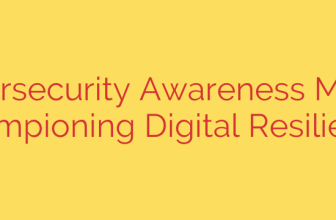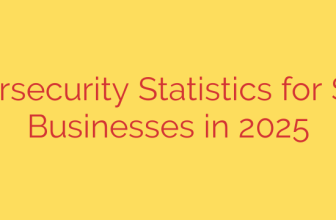
Your Guide to High-Demand Cybersecurity Careers
The cybersecurity industry continues to face a critical talent shortage, with experts often citing a near-zero unemployment rate for qualified professionals. This gap between the growing number of cyber threats and the skilled individuals available to fight them creates a massive opportunity for those looking to build a stable and impactful career.
As organizations across every sector digitize their operations, the demand for experts who can protect sensitive data, infrastructure, and systems has never been higher. If you’re considering a move into this dynamic field, understanding the most in-demand roles is the first step. Here’s a breakdown of the key positions companies are desperate to fill.
The Front-Line Guardian: Security Analyst
The Security Analyst is the cornerstone of any security operations center (SOC). These professionals are the first line of defense, responsible for monitoring an organization’s networks and systems for suspicious activity. They are the digital detectives who investigate security alerts, identify potential threats, and initiate the first steps of incident response.
- Core Responsibilities: Monitoring security information and event management (SIEM) tools, analyzing security alerts, identifying vulnerabilities, and escalating incidents to senior team members.
- Essential Skills: A strong understanding of networking and operating systems, familiarity with SIEM platforms like Splunk or QRadar, knowledge of common attack vectors, and sharp analytical skills.
- Why it’s in demand: Every organization, regardless of size, needs someone watching the gates. The analyst role is fundamental to proactive threat detection and response.
The Ethical Hacker: Penetration Tester
Also known as a Pen Tester, the Penetration Tester plays the role of an authorized attacker. Their job is to find and exploit vulnerabilities in a company’s systems, applications, and networks before malicious actors can. By simulating real-world cyberattacks, they provide invaluable insights into an organization’s security posture.
- Core Responsibilities: Conducting vulnerability assessments, performing controlled exploits, and writing detailed reports that outline security weaknesses and recommend remediation steps.
- Essential Skills: Deep knowledge of hacking techniques and tools (like Metasploit and Burp Suite), proficiency in scripting languages like Python or PowerShell, and a creative, problem-solving mindset. Certifications like the OSCP or CEH are highly valued.
- Why it’s in demand: Compliance standards and a proactive security culture require organizations to regularly test their own defenses. Pen Testers are essential for validating security controls.
The Cloud Fortress Builder: Cloud Security Engineer
As businesses migrate their infrastructure to cloud platforms like Amazon Web Services (AWS), Microsoft Azure, and Google Cloud, a specialized role has emerged to protect these new environments. The Cloud Security Engineer designs, implements, and manages security structures specifically for cloud-based systems.
- Core Responsibilities: Configuring cloud security controls, managing identity and access management (IAM), automating security processes (DevSecOps), and ensuring compliance with the cloud’s shared responsibility model.
- Essential Skills: Expertise in at least one major cloud platform (AWS, Azure, or GCP), understanding of infrastructure-as-code (IaC), and knowledge of container security (Docker, Kubernetes).
- Why it’s in demand: Misconfigurations in the cloud are a leading cause of data breaches. Experts who can properly secure these complex environments are among the most sought-after professionals in the entire tech industry.
The Strategic Leader: Security Manager or Architect
Moving beyond hands-on technical roles, the Security Manager or Architect is responsible for the bigger picture. These leaders develop and oversee an organization’s entire cybersecurity strategy. They align security initiatives with business goals, manage risk, and ensure the company is compliant with regulations like GDPR or HIPAA.
- Core Responsibilities: Developing security policies and procedures, conducting risk assessments, managing the security budget, and leading the security team.
- Essential Skills: This role requires a blend of deep technical knowledge and strong business acumen. Crucial skills include strategic planning, risk management, project management, and excellent communication and leadership abilities.
- Why it’s in demand: A strong security program requires more than just tools; it needs a clear vision and effective leadership. A good Security Manager translates technical risk into business impact, making them indispensable to the executive team.
Actionable Tips for Breaking into Cybersecurity
The demand is clear, but how can you position yourself for one of these roles?
- Build Your Foundation: You don’t have to be a coding genius from day one. Start by mastering the fundamentals of IT, including networking, operating systems, and system administration. Certifications like CompTIA Network+ and Security+ are excellent starting points.
- Get Hands-On Experience: The theory is important, but practical skills are what get you hired. Build a home lab using virtual machines to practice your skills. Participate in online platforms like TryHackMe or HackTheBox and compete in Capture The Flag (CTF) events to solve real-world challenges.
- Specialize and Certify: Once you have the foundation, choose a path that interests you—be it cloud, offense, or defense—and pursue specialized certifications. This proves to employers that you have a deep and validated skill set in a specific domain.
- Never Stop Learning: The threat landscape changes daily. A career in cybersecurity requires a commitment to continuous learning. Stay curious, follow industry news, and always be working to sharpen your skills.
Source: https://www.helpnetsecurity.com/2025/09/23/cybersecurity-jobs-available-right-now-september-23-2025/








